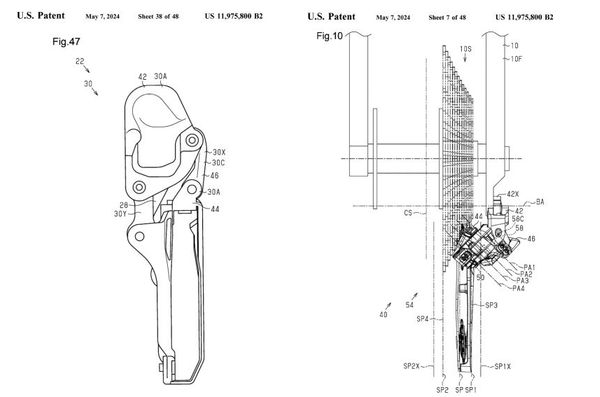Tech Clinic: Tool kits, slipping chains and jumbled groupsets
This week Ollie is in the studio taking on the big questions sent in over the past week
Alex Hunt
Junior Tech Writer
In the tech clinic this week, Ollie Bridgewood is holding the fort on his own while Alex Paton enjoys a well-earned holiday in the sun. Fear not, Ollie has you covered with answers on everything from Shimano Di2 compatibility to setting the correct chain length for your bike.
Is it possible to mix Di2 and mechanical components, and if so, which ones?
Shimano Di2 refers essentially to the parts of the groupset that are under electronic control. The shifters and derailleurs are the parts that constitute a Di2 groupset as these use an electrical signal to change gear rather than a mechanical cable. Everything else in the groupset is standard and compatible with non-Di2 groupsets - so the cassette, chainrings, cranks and chain are all compatible with both Di2 and mechanical groups.
The only other area to double check the compatibility of is the brakes. If you are running hydraulic disc brakes then this needs to be paired with a shifter that is specifically designed for hydraulic disc brakes, and vice versa if you are running rim brakes.
What makes a great bike tool kit and what don’t you need?
A great tool kit usually takes years to accumulate. As you do more and more work on bikes, you will gradually collect a series of tools that allow you to do most jobs on a bicycle.
The best place to start is with a good multi-tool that has a range of hex/allen keys and torx bits to allow for most bolts you will find on a bike to be adjusted. From here a good chain whip and cassette removal tool will allow you to replace your cassette fairly hassle free. To go along with the chain whip and cassette tool, a specific chain tool and quick link pliers will make replacing, removing or refitting any chain a simple task.
One of the more expensive items on the list would be a workstand to put your bike in while you work on it. This will give you a stable platform to mount your bike to, allowing easy access to all areas of the frame, without the need to balance it on anything.
Beyond these tools, it depends on how far down the home mechanic hole you choose to fall. Buying the tools for jobs as and when you need them is a great way of accumulating tools that you definitely need. It is also worth working out how often you will do the job in the future and how much a local bike shop would charge for the work to decide if buying the tool yourself really works out as cost effective.
Can I use inner tubes on tubeless ready wheels?
Yes you can, there is nothing that would prevent you from fitting inner tubes to tubeless ready wheels. Should you want to convert your wheels to a complete tubeless set-up, we have plenty of information on our website and YouTube channels to help you through the process.
My chain keeps coming off when I back pedal, how can I prevent this?
The easiest way to prevent this from happening is to simply not back pedal. We know that sounds alarmingly obvious and almost dismissive but there is a reason this is the best remedy. When you chain is occupying either of the extremities of the cassette, the chain is sitting at the largest offset angle. This means that for the chain to sit in the extremes of the cassette, the chain needs to bend.
When you pedal forward the derailleur compensates for this and ensures that the chain is fed through to the cassette at a nice straight angle to keep everything working smoothly and shifting crisply. When you back pedal, the chain is fed the other way through the system meaning that as the chain comes off the chainring it goes straight to the cassette at an angle that can cause the chain to come off.
If this is something that happens even if your chain is in the middle of the cassette, checking the cable tension and the hanger alignment might also be a good place to start, to see if anything needs to be adjusted.
How can you clean any sealant that gets into the rim cavity after a rim tape failure?
Dried sealant can be a pain to remove - if you have ever had a puncture that has left your frame splattered in tubeless sealant you will know just how hard it can be to get off. There are now some specific tubeless cleaners on the market that have been designed to combat the tough hold sealant can take. Using this with a cloth or fine brush will allow you break down the sealant and remove it a lot easier.
How do I set the correct chain length for a 1x drivetrain?
There is a common method for setting the correct chain length for 2x drivetrains that Ollie himself is a big advocate of. You feed the chain around the largest chainring and the largest cassette sprocket and then add two links to that length. This method can be used on 1x set-ups, however for gravel or adventure riding where a cassette can have up to a 50-tooth sprocket at the back, the method changes from adding two links to adding an additional four links to compensate for the size of the gearing.
It is worth noting that this does vary from drivetrain to drivetrain and introducing components such as oversized pulley wheels can also affect the accuracy of this method, as you need a slightly longer chain to compensate. If you are ever in doubt, it is better to make the chain longer and then work out if that is the correct length, rather than making it too short immediately.
Have a tech question you need answering? Head over to this week’s Tech Clinic video over on the GCN Tech YouTube channel and add your question to the comments along with #ASKGCNTECH.










.jpg?w=600&auto=format)